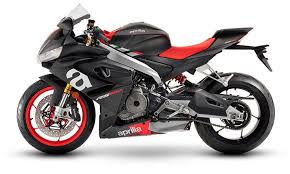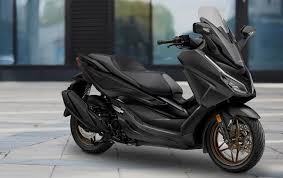Motorcycles come in an impressive variety of styles and configurations, each designed for different types of riding, comfort, performance, and functionality. From the thrill of high-performance sport bikes to the ruggedness of adventure motorcycles, the motorcycle world is vast. Understanding these categories can help prospective riders make informed choices based on their preferences and intended use.
1. Categories of Motorcycles Cruiser Motorcycles
Cruiser motorcycles are known for their low-slung frames, relaxed riding positions, and classic design. These bikes are often associated with a leisurely style of riding, but they can also offer power and comfort for long-distance travel.

Key Features:
- Low seat height: Cruisers typically have lower seat heights, making them more accessible for riders of different statures.
- V-twin engines: Many cruisers feature V-twin engines, providing a distinct sound and ample torque for low-end power.
- Comfortable for long rides: The relaxed riding posture, with feet forward and handlebars raised, offers a comfortable position for extended journeys.
- Styling: Traditional cruisers often feature retro or vintage designs, with chrome finishes, wide fenders, and large gas tanks.
Subcategories of Cruiser Motorcycles:
- Heavyweight Cruisers: These are large displacement bikes, often 1000cc and up, designed for highway cruising and long-distance touring. Harley-Davidson, Indian, and Yamaha VMAX are prominent in this category.
- Lightweight Cruisers: Smaller displacement engines (250cc–650cc), lightweight cruisers are ideal for newer riders. These bikes often offer simpler handling but retain the cruiser aesthetic.
- Custom Cruisers: These motorcycles are often highly modified for both performance and appearance. Custom parts, modifications, and personalization are key features of this subcategory.
- Touring Cruisers: These are cruisers equipped with features such as large saddlebags, windshields, and other amenities for comfortable long-distance touring. Harley-Davidson’s Electra Glide is a popular model.
2. Categories of Motorcycles Sport Bikes
Sport bikes are built for high performance, agility, and speed. With a focus on handling, these motorcycles are designed to provide an adrenaline-pumping ride, often used in racing or spirited road riding.

Key Features:
- Aggressive riding posture: Sport bikes typically feature a more forward-leaning position with higher foot pegs, making them ideal for aggressive cornering.
- High-revving engines: These bikes often have smaller, higher-revving engines that produce significant power at high RPMs.
- Advanced suspension and brakes: Sport bikes feature advanced suspension systems, typically with inverted front forks, as well as high-performance brakes (often dual-disc setups with radial calipers).
- Lightweight: The emphasis on agility means sport bikes are lightweight, allowing for quick acceleration and cornering.
Subcategories of Sport Bikes:
- Superbikes: These are high-performance motorcycles designed for both track and street riding. With engine displacements ranging from 600cc to over 1000cc, superbikes like the Yamaha YZF-R1 or the Kawasaki Ninja ZX-10R are meant for extreme performance.
- Supersport: Slightly less extreme than superbikes, supersport motorcycles are still incredibly fast and agile but tend to be more comfortable and suited to daily riding. Examples include the Honda CBR600RR and Suzuki GSX-R600.
- Naked Sport Bikes: These bikes share much of the performance DNA of sport bikes but have a more minimalist design with no fairing. Models like the Yamaha FZ-09 or the Suzuki SV650 are popular examples.
3. Categories of Motorcycles Touring Motorcycles
Touring motorcycles are the epitome of comfort and convenience for long-distance riders. These motorcycles come with numerous features to ensure a comfortable and enjoyable journey, even over extended periods.

Key Features:
- Large displacement engines: Touring bikes typically have engines of 1000cc and above to ensure smooth, powerful rides over long distances.
- Comfort features: High-quality seats, advanced suspension systems, adjustable windshields, heated grips, and infotainment systems are common.
- Storage: Touring bikes are often equipped with saddlebags, top cases, or other forms of cargo space, providing ample room for luggage.
Subcategories of Touring Motorcycles:
- Full-Touring Motorcycles: These feature extensive comfort and convenience features. Models like the Harley-Davidson Ultra Limited or the Honda Gold Wing fit this category, offering everything from satellite navigation to audio systems.
- Light Touring Motorcycles: These bikes are smaller and lighter than full-tourers but still designed for long-distance travel. They may come with saddlebags and additional comfort features but may not be as feature-heavy as full touring bikes.
4. Categories of Motorcycles Adventure (ADV) and Dual-Sport Motorcycles
Adventure motorcycles are designed for versatility, capable of handling both on-road and off-road riding. Dual-sport bikes are a subset of adventure bikes that are lighter and better suited for more off-road use.

Key Features:
- Long travel suspension: ADV bikes typically feature long-travel suspension to handle rough terrain and improve comfort on uneven surfaces.
- Versatile tires: These bikes use tires that offer a compromise between off-road capability and on-road traction.
- Larger fuel tanks: Given that adventure bikes are designed for long-distance exploration, they often feature larger fuel tanks for extended range.
Subcategories of Adventure Motorcycles:
- Full-Size Adventure Bikes: These larger motorcycles typically have 800cc or higher engines and are designed for extended touring on both highways and dirt trails. Examples include the BMW GS series (R1250GS) and the Suzuki V-Strom 1000.
- Mid-Size Adventure Bikes: With engines between 650cc and 800cc, these bikes offer a good balance between off-road capability and highway performance. The Yamaha Tenere 700 and the Honda Africa Twin fit this subcategory.
- Dual-Sport Bikes: These lighter, smaller motorcycles (typically 250cc to 650cc) are specifically designed to handle off-road conditions while remaining street-legal. Popular models include the Suzuki V-Strom 650 and the Kawasaki Versys-X 300.
5. Categories of MotorcyclesDirt Bikes
Dirt bikes are purpose-built for off-road riding and designed to be lightweight and durable enough to handle rugged trails, jumps, and extreme terrain.

Key Features:
- Lightweight: Dirt bikes are built to be as light as possible to make them easy to handle in challenging off-road conditions.
- Long suspension travel: Dirt bikes feature long-travel suspension systems to absorb shocks and bumps on rough trails and obstacles.
- Knobby tires: These tires provide the necessary traction for off-road conditions.
Subcategories of Dirt Bikes:
- Motocross Bikes: These bikes are designed specifically for closed-course racing on dirt tracks. They are lightweight, have long suspension travel, and feature powerful engines. Brands like KTM and Honda are leaders in this category.
- Enduro Bikes: Similar to motocross bikes but designed for long-distance off-road riding, enduro bikes are built to endure rugged terrain over extended periods. They may have additional features like larger fuel tanks and more comfortable seats for longer rides.
- Trail Bikes: These are less performance-focused than motocross or enduro bikes but still designed for off-road trails. They are often used for recreational riding rather than competition.
6. Categories of Motorcycles Naked Bikes / Standard Motorcycles
Naked bikes, also called standard motorcycles, offer a more upright, neutral riding position, making them ideal for a wide variety of riders. These motorcycles are straightforward, with a no-frills design that appeals to those who want an all-around performer.

Key Features:
- Neutral riding position: The riding position is upright, which makes these bikes comfortable for a range of activities.
- Minimalist design: Naked bikes often have a clean, minimalist aesthetic without the heavy bodywork or fairings found on sport bikes.
- Versatile performance: Naked bikes balance performance and comfort, with engines ranging from 300cc to over 1000cc.
Subcategories of Naked Bikes:
- Streetfighter Bikes: These are essentially modified sport bikes or naked bikes that have been customized for a more aggressive street-riding look. Streetfighters tend to be lighter and faster than typical cruisers.
- Retro / Classic Naked Bikes: This subcategory focuses on bringing back the old-school design of early naked bikes while incorporating modern technology. Examples include the Honda CB series or the Kawasaki Z900.
7. Categories of Motorcycles Cafe Racers
Cafe racers are motorcycles that take inspiration from the customized bikes used in the 1960s by British youth, who would race their motorcycles between cafes. These bikes have a retro style, with modifications that emphasize speed and aesthetics.

Key Features:
- Low, racing-inspired handlebars: Cafe racers often feature clip-on handlebars or “racer” style bars for a low and aggressive riding position.
- Custom modifications: These bikes are often heavily modified, with stripped-down frames, lightweight parts, and unique designs.
- Minimalist appearance: A focus on reducing excess weight and maintaining a clean, stylish aesthetic is central to the cafe racer.
8. Scooters and Mopeds
Scooters and mopeds are small motorcycles designed primarily for urban commuting. They offer a convenient and fuel-efficient way to navigate through city traffic.

Key Features:
- Small engine displacement: Most scooters and mopeds have engines ranging from 50cc to 250cc, which makes them ideal for city commuting and short-distance travel.
- Automatic transmission: Most scooters feature automatic or twist-and-go transmission, making them easier to ride for beginners.
- Comfort and convenience: These bikes often have spacious footrests, small storage compartments, and lightweight designs.
Subcategories of Scooters and Mopeds:
- Motor Scooters: These are typically larger than mopeds and are capable of higher speeds, making them more suitable for both city and highway riding. Popular examples include the Honda SH150i and Yamaha Majesty 400.
- Mopeds: These are smaller, lighter motorcycles often limited to a maximum of 50cc and usually have lower speeds. Mopeds are designed for urban environments and short-distance commuting.
Conclusion
Motorcycles come in a vast array of styles and configurations, each designed to cater to specific rider preferences, activities, and environments. Whether you are looking for speed and agility on a sport bike, comfort and reliability on a touring motorcycle, or the rugged off-road capability of an adventure bike, there’s a motorcycle out there for every kind of rider. Understanding the various categories of motorcycles—from cruisers and sport bikes to dirt bikes and scooters—can help you make an informed decision about which bike suits your riding style and needs best.
For those who enjoy long-distance travel, a touring motorcycle might be the perfect fit, while those who seek thrills and track days may find a sport bike or naked bike more suitable. If versatility is important, adventure motorcycles offer a great mix of on-road and off-road capability. Additionally, with advancements in electric motorcycles and the rise of electric scooters, the world of motorcycles continues to evolve, offering new opportunities for eco-friendly riders.
Whatever your preference, understanding the diverse categories of motorcycles can help ensure you choose the right bike to match your riding experience and lifestyle.

